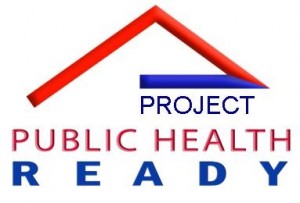By Leigh Wilsey, Preparedness Coordinator, Florida Department of Health in Clay County
This article was originally published in NACCHO Exchange. To read the entire issue, download the newsletter from NACCHO’s online bookstore (login required).
 As a local health department (LHD), the Florida Department of Health in Clay County (DOH-Clay) has had many opportunities to respond to emergencies and disasters that impact public health. Large statewide public health response activations have included the following:
As a local health department (LHD), the Florida Department of Health in Clay County (DOH-Clay) has had many opportunities to respond to emergencies and disasters that impact public health. Large statewide public health response activations have included the following:
- Hurricane Andrew, 1992;
- Wildfires, 1998;
- Hurricane Floyd, 1999;
- Hurricanes Bonnie, Charley, Francis, and Jeanne, 2004, known in Florida as “The 4 of ’04”; and
- Local activations for tropical storms, flooding, and wildfires.
Prior to 2006, DOH-Clay’s role in public health response was limited to staffing special medical needs shelters. Even though a basic written plan existed, staff had experience running the shelter and rarely referred to it. While staff always had a “we will get the job done” attitude, the lack of coordinated planning and training presented many challenges in the back-to-back activations during the 2004 hurricane season.
Nancy Mills, who became the health officer for DOH-Clay in 2004, immediately faced leading the agency through four consecutive hurricanes. She realized the importance of coordinating all the components of public health response within the LHD and with community partners. Mills knew that participating in NACCHO’s Project Public Health Ready (PPHR) would be the perfect mechanism to accomplish this goal. PPHR is a competency-based training and recognition program that assesses preparedness and assists LHDs, or groups of LHDs collaborating as a region, to respond to emergencies.
Mills developed a plan to become PPHR-recognized and championed the agency’s efforts among her peer counties. She stated, “While the public recognition for achieving PPHR recognition added value to the process, the significance of the effort was far more practical. Through participation in the program, we identified and institutionalized all of the plans necessary to effectively respond to any public health emergency. This strengthened our local public health system and built the confidence of our stakeholders in our ability to support and care for our community in times of disaster.”
After DOH-Clay received its first PPHR recognition in 2007, staff from each of the DOH-Clay programs formed “Team Ready” to institute a culture of preparedness throughout the LHD. The team spent seven months writing, reviewing, and training LHD staff on the public health response plans developed for PPHR. The planning and training culminated in a large point of dispensing exercise, during which staff distributed over 1,000 doses of pretend antibiotics for a simulated anthrax attack. Consistent with PPHR’s continuous quality improvement model, the team then incorporated lessons learned from the exercise into the agency’s preparedness plans. During this time, Team Ready also implemented a personal preparedness campaign aimed at LHD staff.
Mills remarked, “I believed in the PPHR process and knew my team worked hard to develop to achieve PPHR recognition. We learned the benefits when we faced the first pandemic of my career, H1N1. When we chose to participate in PPHR, I hoped it would provide a framework for our preparedness program. It did that and more. The relationships with our local response partners that we developed through PPHR enabled us to successfully respond to H1N1.”
When the five-year PPHR recognition period expired in 2012, DOH-Clay knew it would apply for re-recognition because staff and leadership valued the benefits of completing the PPHR application process. The feedback and comments received on DOH-Clay’s PPHR plans and processes provided opportunities for ongoing improvement. Continuing the PPHR process provided the quality assurance needed for the DOH-Clay Preparedness Program.
Winifred Holland, who became DOH-Clay’s health officer in 2013, also valued PPHR and used the experience to embark on the process of becoming accredited by the Public Health Accreditation Board (PHAB). Holland noted, “My first major project when I came to Clay was to become PHAB-accredited. Because we were PPHR-recognized, we were able to meet several of the PHAB measures and are well on our way to achieving accreditation. The continuing quality improvement aspect of PPHR also aligns with our strategic planning goals.”
Although the agency had thought it was prepared before completing PPHR, DOH-Clay now knows it is ready and able to respond to any emergency. PPHR is not about generating paperwork and getting a plaque to hang on the wall; it is about the opportunity to refine the planning and training needed to provide a more effective public health response—though after completing all the hard work involved, DOH-Clay still enjoys having the plaque.
This article was originally published in NACCHO Exchange. To read the entire issue, download the newsletter from NACCHO’s online bookstore (login required). To see more public health preparedness news, visit http://nacchopreparedness.org.








